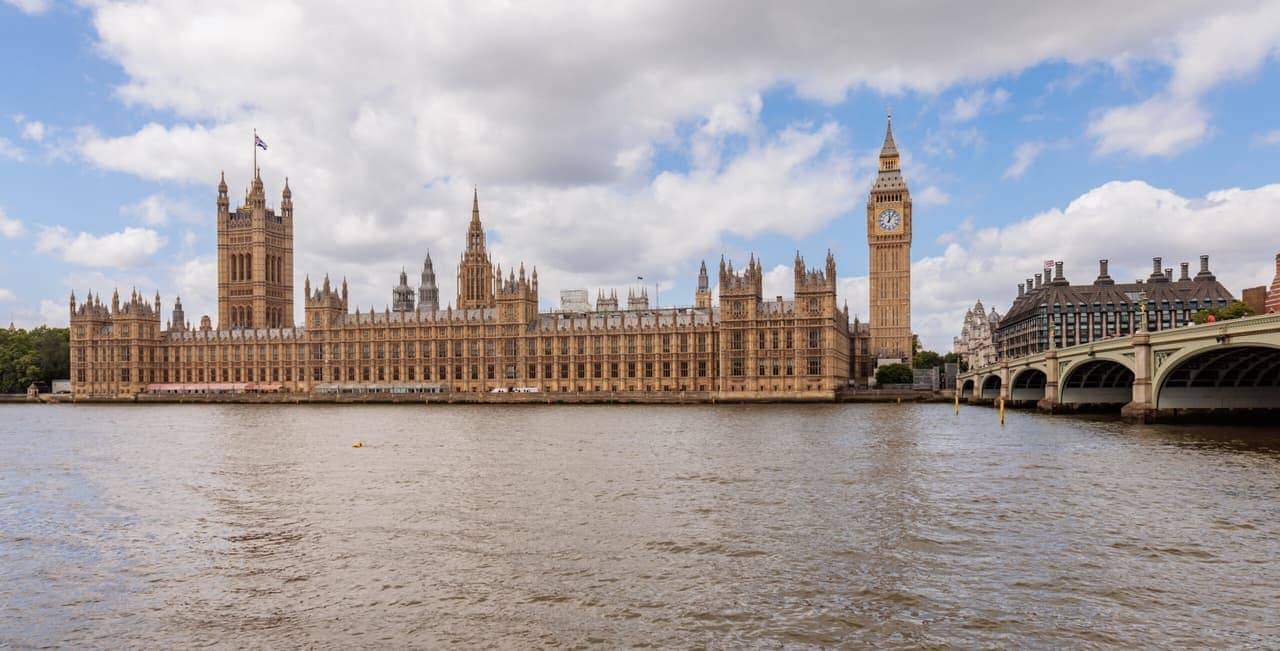LEICESTER, United Kingdom – Wall paintings dating back to the 19th century have been discovered at Shrewsbury Cathedral in western England.
The Catholic cathedral was built in 1856, just six years after the re-establishment of the diocesan episcopacy in England. It was one of over 100 Catholic churches designed by famed architect E. W. Pugin.

The paintings discovered during restoration work are believed to be by Joseph Aloysius Pippet, a prominent Catholic artist of the era who worked on the cathedral from 1885. They were painted over during refurbishments that took place from 1950, including major alterations in the 1970s and 1980s. In 2019, Shrewsbury Bishop Mark Davies put in motion a plan to restore the cathedral to its original state, and the paintings were rediscovered.
“The discovery of the elaborate and colorful wall paintings surviving in such good condition under layers of modern cream paint is very exciting,” said Sophie Andreae, the Vice Chair of the Patrimony Committee of the Catholic Bishops’ Conference of England and Wales.
The art depicts several biblical scenes and Catholic saints, and cover the walls of the sanctuary and around the altar.
According to a statement released by the diocese, McNeilage Conservation has concluded that “not only have the images survived but they also probably remain in a sufficiently good condition to be recovered and conserved as funds and resources allow.”
James Crowley, Architectural Historian and the Secretary of the Wales and Herefordshire Historic Churches Committee, called the uncovering of the paintings “very welcome and exciting news.”

“These decorative schemes provided rich adornment to interiors, but many were painted out as they were damaged or became dulled by decades of dust and candle smoke; they were far removed from the modern plain decoration in subtle shades that is today commonplace in most Catholic churches of this period. Such schemes served not only decorative purposes but often had a catechetical function and the Cathedral scheme is no different,” he said in a statement.

The diocesan statement said the exploratory work uncovered three sections of a painting on the upper north wall of the sanctuary showing the Archangel Gabriel visiting the Blessed Virgin Mary at the Annunciation, decorated also with images of a dove, a lily, star motifs, symbols for Mary and Latin inscriptions on scrolls. On the south wall of the cathedral, a fleur de lys and crown painted in red and green were also exposed.
“The largest single painting, however, is high on the sanctuary arch and shows Jesus Christ seated in glory in the presence of the Virgin Mary and St Joseph. Conservators have yet to reveal any section of the image,” the statement said.
The two-year restoration project has also uncovered thousands of neo-Gothic revival floor tiles which had been covered by carpets.
In addition, the diocese says a wrought iron cross has been restored, repainted and returned to the roof of the cathedral, while the bell has also been restored, repaired and cleaned, “and is now able to chime again after nearly 50 years of silence.”
“The careful current restoration project which will see the unsympathetic alterations carried out in the 1970s and 1980s reversed and the interior of Shrewsbury Cathedral restored to its former glory is an inspiration,” Andreae said in a statement.
“So many of our fine Victorian churches were damaged during the changes that came in with Vatican II. Sadly, this was just the moment when appreciation of Victorian architecture in this country was at its nadir and as a result much wonderful Victorian craftsmanship in our historic churches was lost,” she explained.
“A growing appreciation of historic Catholic church buildings, and in particular their interiors, in recent years is leading to a re-evaluation of what was done back then and a welcome desire to restore beauty and color to our buildings based on sound historical research and careful exploratory investigations by conservators. This is exemplified by the recent work at Shrewsbury,” Andreae added.
Crowley said that perhaps “the most exciting prospect remains to be seen.”

“Archival research prior to these recent investigations had already established that as well as various stenciled patterns throughout the sanctuary there were figures of angels and a depiction of the Annunciation, part of which has now been uncovered,” he said.
“The area over the sanctuary arch was the most lavishly decorated with a large scene depicting Christ seated in glory with Our Lady and St. Joseph below to the left and right, below them are angels ascending with prayers of petition from the faithful and descending with crowns of blessing,” he continued.
“I am hopeful that further work by the conservators will establish that extensive sections or even the whole scheme might be recovered, increasing the aesthetic quality of the interior and serving as an aid to the practice of our faith,” Crowley said.
Follow Charles Collins on Twitter: @CharlesinRome


















